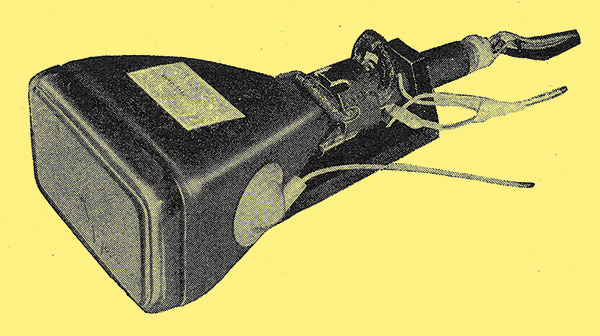|

An interesting development connected with deflection sensitivity was the use of magnetic instead of electrostatic deflection. This eliminates the need for high deflection voltages and allows transistors to be used for driving purposes. As an example Ferranti showed a small tube with a 5.25 in x 3.5 in screen on which magnetic deflection coils were used for X deflection and electrostatic plates for Y deflection. Because there is only one set of plates inside the tube it has been possible to make the anode aperture larger and so increase the spot brightness. Moreover, the tube length is reduced. The coils,, of course, are wound to suit the driving circuits and can be resonated to give over-scanning by a large amplitude sine wave (so that the visible part of the scan is produced by the comparatively linear section of the wave). GEC Research Laboratories went further than this by making both X and Y deflection magnetic, and building the coils actually inside the tube envelope to increase the deflection sensitivity. The coils in their experimental tube (two pairs) are arranged sequentially like electrostatic deflection plates and measure about 3 cm x 1 cm, with inductances of about 20 μH. The deflection sensitivity is 1mA per millimetre in both directions.
|